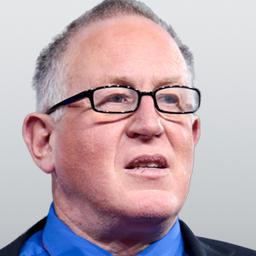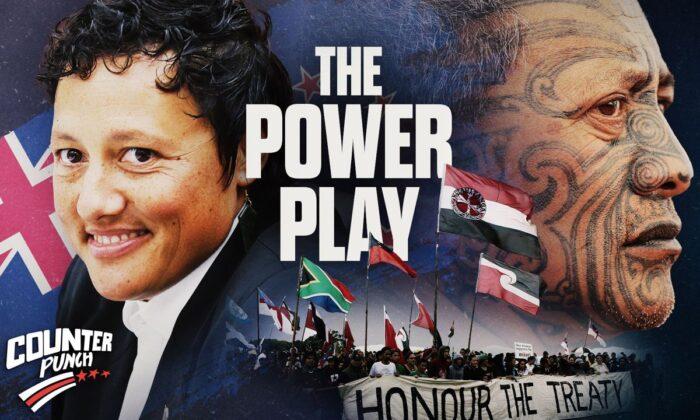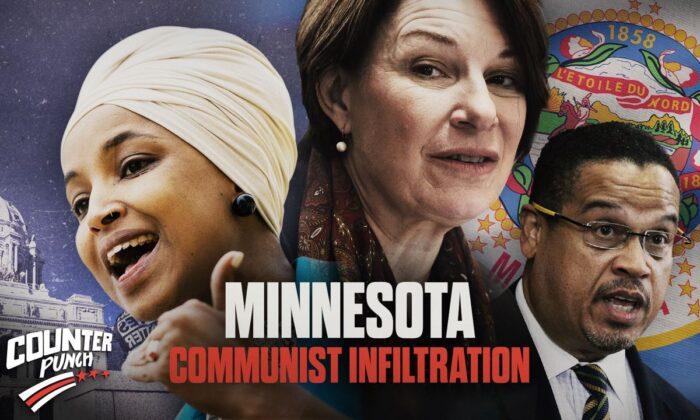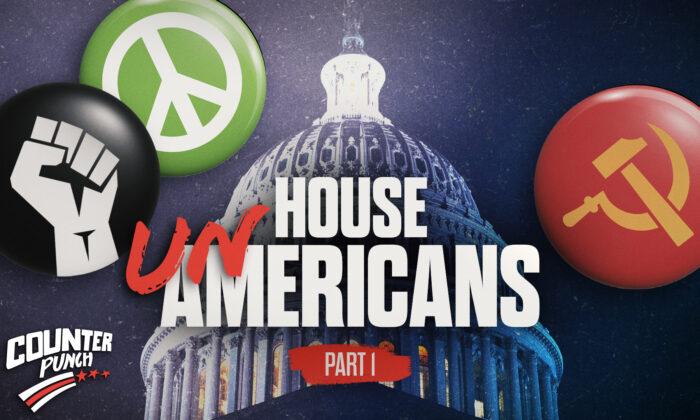Communists long ago realized that it’s difficult to achieve the social disintegration needed to ready a country for communist revolution by promoting class division alone.
Class is amorphous; it can change within a generation. In a free society, an ambitious individual can rise from beggar to billionaire in a lifetime. Class is an unreliable wedge issue for revolutionaries, especially in Western free-market societies.
Ethnic, religious, and especially racial differences are more stable. The divisions are deeper; the differences, more obvious; and their histories, more imbued with bitterness and hatred. Few people care that their grandparents were poor, but many might care that they were slaves or dispossessed of their ancestral lands by a rival racial or ethnic group. Such resentments can last for generations.
The ‘National Question’
Father of the Soviet state Vladimir Lenin stated in “The Socialist Revolution and the Right of Nations to Self-Determination”:“The aim of socialism is not only to end the division of mankind into tiny states and the isolation of nations in any form, it is not only to bring the nations closer together but to integrate them. ... In the same way as mankind can arrive at the abolition of classes only through a transition period of the dictatorship of the oppressed class, it can arrive at the inevitable integration of nations only through a transition period of the complete emancipation of all oppressed nations, i.e. their freedom to secede.”
In other words, before revolutionaries can integrate all nations into a global socialist super-state, existing nations must be broken down and fractured along class and racial lines.
Lenin’s successor, Joseph Stalin, developed these ideas further in his famous essay “Marxism and the National Question.” In essence, Stalin believed revolutionaries should destroy targeted nations by encouraging ethnic or racial minorities to work toward a separate state, to secede or break away from their existing country. In modern times, this has been extended to campaigns for bilingualism, separate justice systems, reparations for slavery, land confiscations, and so on.
International communism’s first ruling body, the Comintern, stated, “There can be no Bolshevization without a correct policy on the national question.”
Exploiting Genuine Grievances
It is important to note that communists are most successful when there are genuine grievances to be exploited. It is very hard to worsen racial conflict in a free country where everyone is treated equally before the law. Liberty and rule of law is the best inoculation against revolution.In the United States, the Communist Party began work on the Southern black population in the late 1920s. Some communist operatives were sent South to set up revolutionary cells in black communities.
The initial demand was land. Following Stalin to the letter, the communists agitated to create a black-run, separate nation in the Southern states.
Leading Southern black communist Harry Haywood wrote in “For a Revolutionary Position on the Negro Question” in 1958:
“The Negro question can only be solved by giving the land to the Negro soil tiller, whose labor has paid for it a thousand times over. The Negro question can only be solved on the basis of full development of the Negro nation in the Deep South under socialism.
“The territory of the Deep South belongs to the Negro people. They have earned it, as no other people have earned a homeland.”
After World War II, American communists realized Stalin’s ideas might work in Central Asia but were hopelessly unrealistic in the United States. So the plan was changed to agitating for full civil rights for Southern blacks.
The communists set up the American Negro Labor Congress, League of Struggle for Negro Rights, International Labor Defense, National Negro Congress, the Civil Rights Congress, Negro Labor Victory Committee, Southern Negro Youth Congress, and other organizations to bring more blacks into the movement.
The civil rights movement was necessary and just. But it was riddled with communists from top to bottom. The goal was first to liberate the blacks from Jim Crow, then to utilize their growing political power to push for socialist change—increasingly through the Democratic Party—then to push on to socialism.
A 2003 Communist Party USA (CPUSA) report, “The National Question,” states:
“The national question is a big part of the CPUSAs program. A crucial part of our fight from here to socialism is a solution to the national question.
“In national elections, African Americans vote more overwhelmingly against the extreme right than any other group, mainly using the Democratic Party vehicle. In the 2000 Presidential race Black voters represented 10% of those who voted. ... Because they vote almost unanimously as a block in most elections, African Americans have a level of influence beyond their actual numbers.”
The report went on to state:
“In our country the national question is a complex of issues. There will be different streams in different national struggles. Different national groups will have their own specific demands and tactics. It is not enough to make general calls for unity. The big challenge is to find ways to build unity while taking into account the correct demands of all racially oppressed groups.”
In 2013–2014, several activists affiliated with the Maoist-leaning Freedom Road Socialist Organization (FRSO) created Black Lives Matter (BLM) after the 2012 killing of black teenager Trayvon Martin in Florida by a neighborhood watch volunteer.
When black teenager Michael Brown was killed in self-defense by a policeman in August 2014 in Ferguson, Missouri, the town erupted into several weeks of rioting, looting, and arson—which also spread to several other cities.
In spring 2015, the New York–New Jersey District of FRSO sponsored a forum titled “Ferguson: The Movement So Far and Lessons for Coming Struggles.” The first speaker was “our comrade,” Montague Simmons, chair of the FRSO-controlled Organization for Black Struggle in St. Louis, Missouri.
Targeting Minority Groups
The CPUSA and other communist groups, notably FRSO, have applied some variant of the National Question strategy to almost every racial minority in the country.Both pro-Soviet and Maoist communists worked to promote the idea that much of the southwestern United States, which they call “Aztlan,” really belongs to Mexico and should be returned to that nation. Marxist groups such as La Raza Unida Party and the Maoist-leaning Movimiento Estudiantil Chicano de Aztlan (MEChA) have promoted that concept for decades.
On April 9, 1975, California-based Marxist academic Jorge Acevedo addressed a letter in Spanish to several well-known U.S. Hispanic activists, including Lorenzo Torrez, the Arizona-based head of the CPUSA’s Chicano Equality Commission; Los Angeles communist and Chicano leader Bert Corona; Dolores Huerta and Cesar Chavez of the United Farm Workers union; New Mexico land-rights activist Reies Lopez Tijerina; Colorado Chicano leader “Corky” Gonzales; and José Ángel Gutiérrez of the Texas La Raza Unida Party.
The letter referred to the Soviet Consulate in San Francisco, Chicano participation in the Patrice Lumumba University in Moscow, a training center for third-world Marxist leaders on Chicano self-determination, and the “socialist system.” The letter explained a proposal received from the Soviet Consul in San Francisco.
The Soviets wanted the addressees to find students of both sexes to enroll in the Patrice Lumumba University in Moscow for the academic year beginning in September 1975. The Soviets explained that their socialist system sought “to support the Chicano self-determination movement.”
The proposal probably went nowhere, because even by then, most mainstream communists had given up on giving the Southwest back to Mexico and were instead looking to harness Latino voting power behind their allies in the Democratic Party.
According to the March 6, 2004, issue of the CPUSA’s People’s Weekly World, “Communist Party leaders and activists met here to discuss plans to bring out the broadest possible Mexican American and Latino vote to defeat the ultra right in the November elections and to strengthen the CPUSA’s work among this section of the population.”
It added that Torrez, chair of the Party’s Mexican American Equality Commission, had “reviewed the Commission’s work in the recent period” and proposed organizing “a left-center Latino coalition” to create “progressive sentiments of U.S. Latinos.”
It also stated that Rosalío Munoz, CPUSA organizer in Southern California, noted: “The presidential race will be decided in key ‘battleground states.’ A number of these, such as Arizona, New Mexico, and Colorado, are states where Mexican Americans are concentrated.”
FRSO also sees America’s fast-growing Latino population as having great revolutionary potential. Its website states: “For five hundred years, Latin@ [sic] peoples across political borders have struggled for independence, peace, justice, democracy, and for Mother Earth.
Deepening Divisions
During World War II, the CPUSA expelled ethnic Japanese members and supported President Franklin D. Roosevelt’s policy of interning Japanese-Americans in guarded camps for the duration of the war.In the 1970s, America’s Maoists deliberately reopened those wounds by campaigning for “reparations” and official apologies to the internees and their families.
The League of Revolutionary Struggle (LRS) and other Maoists worked through the National Coalition for Redress/Reparations, Nikkei for Civil Rights and Redress, Japanese American Citizens League (JACL), and the National Council for Japanese American Redress.
According to the Nikkei for Civil Rights and Redress website: “We held countless forums to educate and activate the community to participate in the Redress Movement. In 1987, we organized a lobbying delegation of over 120 Nikkei to Washington D.C.
“Since the historic signing of the CLA in 1988, NCRR has vigorously fought to ensure that redress becomes a reality for all those who were deprived of liberty during World War II. In 1989, when appropriations for the CLA became stalled, we rallied the community to push for appropriations. In October 1990, redress became a reality, as Japanese Americans began to receive redress in the form of a presidential apology and $20,000 monetary compensation.”
The broader purpose was to radicalize young Japanese-Americans and draw many of them into the socialist movement—and to deepen divisions in American society.
The LRS (which later merged with FRSO) also worked to radicalize Chinese-Americans. In the 1970s, LRS’s predecessor organization I Wor Kuen established the Chinese Progressive Association, with branches in San Francisco, Boston, and New York. These organizations used ethnic pride, racial grievance, and Chinese nationalism to draw thousands of young Chinese-Americans into the revolutionary pro-Beijing orbit. The once solidly pro-Taiwan San Francisco Chinese community is now solidly in the Beijing camp.
Bay Area Asian-American community organizations sponsored a forum in Chinatown to “make the link between U.S. imperialism and racism against Asians in the U.S.” on July 8, 2001, according to a report on the communist website Fight Back News.
Gordon Mar, a former LRS supporter and Chinese Progressive Association president, was quoted by the website as saying, “Mainstream Asian American organizations oppose racism but won’t make the link to U.S. and corporate policy abroad.”
According to Fight Back News: “While these mainstream organizations object to the increased racism of the American public and media towards China and Chinese Americans, they also try to distance themselves from China by encouraging Asian Americans to become more patriotic and to express their loyalty to the U.S.
“We’re here because the U.S. was in our homelands. The message our community needs to hear is that as long as U.S. imperialism rules in Asia, Asians living in the U.S. will be denied true equality and continue to face national and racial oppression. Rather than distancing ourselves from Asia, we need to find ways to unite our struggles.”
Communists also work closely with Native American organizations.
In 2016, several thousand Native Americans and their supporters converged on the Standing Rock Indian Reservation in North Dakota to oppose the proposed Dakota Access pipeline, which would carry crude oil from the Bakken oil field to refineries in the South. The protests lasted several months and included several instances of violence and sabotage.
Divide and conquer is the name of the game. All over the world, communists are using racial, ethnic, and religious differences to weaken targeted nations. Virtually every major race riot, race-based protest, land-rights or reparations movement, or affirmative action program in the last 100 years has been communist inspired, instigated, or abetted in some way. Often the surface cause was just, and some good things were achieved. But the long-term goal was always socialism.
Racial harmony is possible, but only in free societies where all are treated equally by the government.
The communists don’t want freedom, equality, or harmony. “National Question” politics seeks to liberate nobody. Ultimately, it is designed to first divide, then enslave us all.





